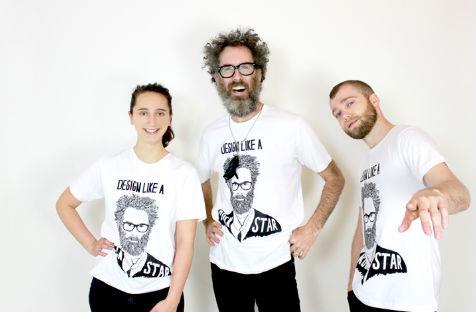There are not enough jobs for designers and that’s only part of the problem for those wanting to make it in the industry.
Unfortunately we no longer live in the era of Don Draper and, while a reference to Mad Men is a predictable, the show has done a lot to glamorise the advertising industry – a place where many designers will end up working.
The days of sipping drinks while you work – if they ever existed – are gone. Just getting the work is a challenge. So, how can designers make a living in an increasingly harsher climate?
Creative Chairman at Droga5, one of Australia’s leading advertising agencies, David Nobay told the agIdeas conference earlier this year that a lot of students are taught the technicalities of what they need to know, but when it comes to the nitty gritty they are unprepared.
‘Going into war you are taught how to clean your gun but no one tells you that you’ll shit yourself when you go into battle,’ he says when revealing his “Ugly Truths” about the advertising industry.
One such truth is, even if you do end up working within the industry, that, ‘Not all clients want great work’ and ‘What we think is great work and what a client thinks is great work are two different things’.
When these two things don’t align, the creative industry can be, according to Nobay, ‘The most painful industry to be in.’
Brooklyn-based award winning industrial designer Brooks Atwood, recently in the country to speak to design students as part of the Portable talks series, has a more optimistic view.
‘In every field – industrial design, architecture – there are different kinds of designers. There’s more technical, there’s more craft, there’re more toy design or there’s more automotive design. I feel like there’s tonnes of fields and actually in today’s market I feel like design has a lot more opportunities than it had in the past, ‘ he explains.
‘There’s a lot of opportunities out there it just takes somebody to think about it and to be creative about where they want to end up and what kind of things do they want to do.’
Atwood is a leading thinker in his field and is also a professor of design at the New Jersey Institute of Technology. He has been praised by the New York Times and was an early proponent of 3D printing. His forward thinking approach to design is inspirational to those looking to get a foot in the door.
When asked if he thinks there are enough opportunities for students finishing University, at least from a United States perspective, Atwood says, ‘No. I’m a professor and I love my students a lot and I dedicate my life to them and I’m a nutty professor so I really want to help them as much as possible succeed when they graduate.’
He says that he gets his students to push boundaries to create innovative and interesting work. He also pushes them to do competitions while they are in school and to get their work into exhibitions.
‘I think students who are graduating and are in school now really need to be aware of there’s a lot of competition and not that many jobs out there and I feel like in order for you to get that job you have to have one or two advantages over everyone else and that’s by pushing the fucking boundaries of shit and doing amazing stuff. You can’t sit around waiting for jobs to fall on your lap that’s not happening.’
On the competition front, Nobay agrees, ‘There are too many of us… There are a lot of people wandering around looking for jobs and even people who were busy five years ago aren’t that busy now.’
Nobay believes that there are three kinds of creative people: the great, the good and the gifted. The “great” are the big fish, the “good” float around somewhere in the middle and the “gifted” are talented people who, for whatever reason, haven’t quite been able to make themselves “great” – but they have potential.
The key is to, says Nobay, ‘Be brave if you are gifted, make sure you can go somewhere where you can be great.’
Another ugly truth about the creative industry is, according to Nobay, is that is has lost its exotic. The time when clients felt that they could leave everything up to the creative team is gone and now, according to Nobay clients feel like they can say, ‘I’ve read the book…. I want to have a say in everything you do.’
‘It makes this business very difficult to work in.’
Nobay also feels that we’ve forgotten how to sell. Clients, he says ‘Want great results and at the end of the day they’ve got their own KPIS’ so creatives need to actually understand how to sell the story by not only being good storytellers, but by being good listeners.





